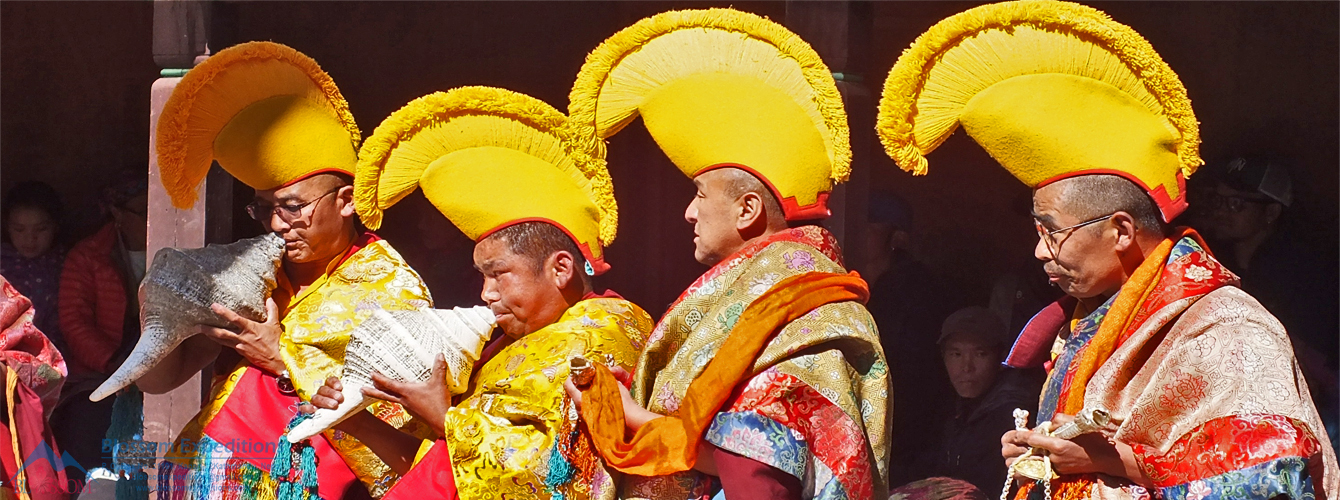
After having traveled from north to south Lebanon with Jorge and enjoying an amazing trip, I was radiant.
What healthier therapy!!!
On October 28th I departed to Nepal for attending Mani Rimdu, sherpa’s festival in Sagarmatha National Park, as well visiting Chitwan National Park, going on a pilgrimage to Lumbini, the city where Gautama Buddha was born and traveling to other areas of the country hand on hand by my friend and guide Ambar Tamang. Blossom Expeditions www.blossomexpeditions.com, his travel company, tailored a twenty-five days trip for me. Before leaving for Nepal, I received at home my beloved Berliner friends Stefan and Sandra. I had limited period of time to prepare a precise luggage for doing a trekking and staying some days in the jungle. Thank to Ambar, he had sent me a complete list of all necessary outdoor gears, packing was not very complicated. Meteorological conditions in the mountains are highly unpredictable and you lack nothing. A day before leaving home, I received bad news from Marian, my friend Joaquin have already passed away ten days ago. Words simply failed me. I didn’t know how to say to his wife. Joaquin and I have met in Ethiopia a few years ago, time to time we chatted, sharing our travel experiences but mainly we were worried about the corrupted political situation in Spain. We have held highly esteemed.
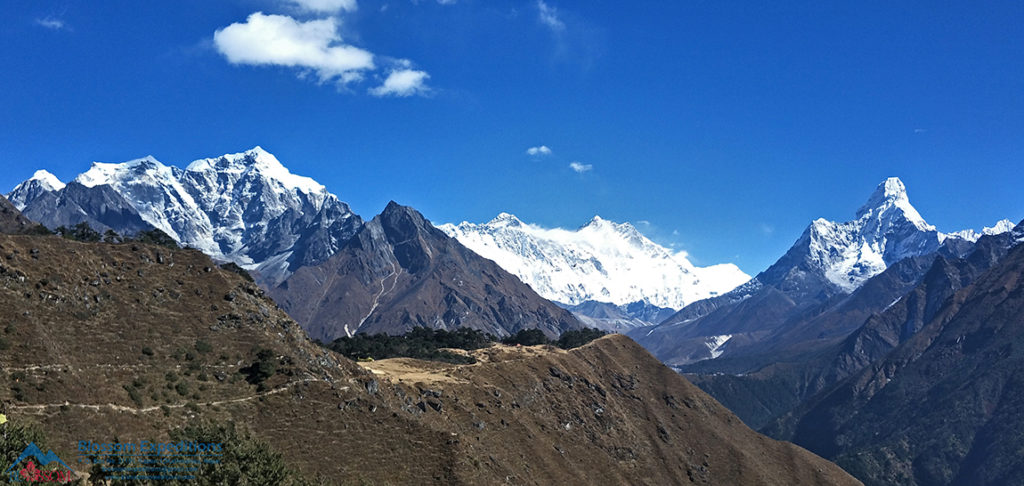
What a sad year! How many beloved friends had passed away? Among the others, Manolo Folgado, a friend from València’s Central Market; Vicentica, an adolescence’s friend; German Francisco, my mother’s cousin; Julio, Vinalesa’s Mayor and my uncle Vicente. As well, Joaquin. Furthermore, on November, 1st was the tenth anniversary of my father’s death and it was the first year I was not at home. Traveling to Nepal without many expectations even without no time to reread the itinerary but I was really happy to meet Ambar again. Recently, I have read some books written by lamas about Buddha’s life, some basic concepts about Buddhism and therapeutic benefits of meditation. Through reading, I wanted to lay foundations for being acquitted myself with the Buddhism dimension but I have to confess it is not easy to understand. It is quite difficult! For this trip, I took the necessary but still incomplete Nepal Lonely Planet’s guide and a book named “The Crossing Place. A journey among the Armenians” by Philip Marsden for the moments of relaxation and solitude. Among many books I have chosen it after knowing more about the Armenians in Lebanon, thank to Pierre Ananiguian, Libantrek’s city guide www.libantrek.com. I arrived at Kathmandu’s airport after two stopovers in Madrid and Doha and more than twenty-four hours travel. Luckily, the airport has improved significantly ground facilities and services as well visa procedures, baggage claim, and customs clearance are faster and safer than a year ago. In front of the arrivals door of the airport was Ambar saying NAMASTE to me. What a joy to meet us again! It was too late, immediately, we went to the hotel located in Thamel, I was exhausted and I need to sleep. Kathmandu received me with a congested traffic, bumped pavement and dust in everywhere. Despite these discomforts, streets are full of life.
One of a kind Thamel’s neighborhood is considered a hot spot for tourism, tourists, and mountaineers come there, it boats all-categories hotels, a wide selection of restaurants and gastronomies. As well as, there are a large number of specialized shops, travel agencies and vendors commonly sold many items. Here, it is difficult to be bored; unfortunately, resting well is quite difficult. Thamel holds all parties after successful trekkings and climbings. Once at the hotel and paid the services purchased I went to rest. Early morning, we left the hotel to Pharping with four Canadian from Edmonton doing a small trek, enjoying stunning vistas of Kathmandu’s valley simultaneously eating a tasty dhal-bat. Before coming back to Kathmandu, we accompanied our companions to Neydo Tashi Choeling Monastery, what a nice place to rest!. I could have never imagined. That night, Ambar invited a welcome dinner in a cozy garden-terrace near to the hotel; I was going to meet our trek-mate. Only, I know he was American. When I saw him, I was speechless. I thought: “he is too old”. Ufff! Michael lives in Seattle and he is 77 years old, traveler, very cultured, talkative, with progressive ideas and anti-Trump. Decidedly, I was worried and a bit upset. At that moment all I could think about was how I will do our trek but the dinner was very nice. Early we went to Lukla by plane to begin our trek into the Sagarmatha National Park. It has been declared UNESCO heritage site since 1979. Sadly, Lukla is considered the most dangerous airport in the world; it was difficult to cope with my thinking. Just before driving to Kathmandu’s airport and sitting in the hotel hall I read a detailed article about all accidents happened in Lukla’s runway. If I didn’t want to read it! What inappropriate reading! What distress! During the flight, I couldn’t forget any detail about the accidents. At the moment of landing, I closed my eyes.
Lukla received me with breathtaking views, blue cloudless skies, many mountaineers and porters, herds of donkeys, horses or buffaloes loaded with mountaineers or alpinist gear and mainly groceries for people living in the National Park. We already were at 2.860 m and everything is loaded by men or animals on their backs. At last, we were in Khumbu’s region, the Land of the Sherpa. It’s the most known ethnic group in Nepal, thank the biggest mountain climbing records. Today, Sherpa people run most of the tea-houses, restaurants, shops and luxury hotels. Also, they are experienced climbers who help international mountain climbers groups to get the highest summits. Some years ago, Sherpa people were very poor and migrated towards the wealthier Nepali regions to get some money. Nowadays, they generate work and incomes for other ethnics groups with a considerable volume of business, Sherpa people enjoy a good economic status. While we were taking a tasty tea, we received our first setback, the porter contracted didn’t attend the meeting point even didn’t answer back the phone call.
What lack of formality! I thought. Immediately, Ambar diligently solved the problem. Finally, we have already porter. His name is Nima Sherpa. He was in charge of taking Michael, I and his equipment are along the trek. His physical appearance is not robust enough, not very tall, dark skin and a kind smile who didn’t abandon despite his limited English language skill. Hiking with more than 30 kg in his back all day, our luggage was in time and in good conditions in our next tea-houses room. At last, we started to hike. I was content, greeting shopkeepers and local people with a NAMASTE. Buildings are well-built with doors and windows painted in intensive colours, landscapes left me breathless and the trek atmosphere was very cordial despite the overcrowded path with hikers from around the world. Unexpectedly, we walked very slowly, Michael set the pace of our trek. Some negative thinkings penetrated my mind making feel unhappy. Indeed, I took the opportunity to chat with other hikers, porters or simply, enjoying the landscapes and Sherpa’s life while I photographed nonstop. Ambar is a clever man and suggested me I was not very relaxed. He kept an eye on Michael. I had to reflect and change my mind. I told me: “take advantage of walking with a 77 man-year-old. At his age, I wish you have the physical and mental strength to do it. Learn it! I guess! Since then, it was all going to be made better. In addition, Michael speaks excellent English, with many idioms and telling us many anecdotes. I thought: I am so lucky. I have free English teacher for me during the trek. Once time into the Park, there were hikers from almost every European country as well Nord-Americans, Australians, New-Zealanders also, Koreans, Chinese, Russians, Hindus,… even Burmese. This is the greatest mountain pilgrimage to get Everest Base Camp. It listened to many different languages, most of the trekkers had their own porters. These men belong to different ethnic groups and speak their own languages come from other Nepali regions to earn a salary. Most of them are young, poorly dressed, walking with a flip-flop or slide slippers upon rocks, carrying over their backs overloaded packages tied with a string to front and waist, with a short crutch for resting, blackened face and a badly combed hair. They broke my heart. The contrast with the clothing the hikers wore was obscene. But, they have to earn some money and have always worn this kind of shoes.
The path is multi-ethnic and a veritable Babel tower. The majority religion confession in Khumbu is Buddhism displaying its symbols along the trek. Always walking near the stupa and mani-walls in a clockwise direction. Also, rotating uncountable wheels-prayers and reciting the mantra OM MANI PADME HUM. This is the most famous and spread Buddhism mantra to get mental clarity, love and to increase compassion. The path is adorned with multi-coloured prayers flags and khata written with OM MANI PADME HUM spreading the mantra by the wind in every corner. As well, trekkers and porters share the path with rows of animals loaded with equipment gear even hydrocarbons. Animals and people save shift to cross long and narrow bridges adorned with flag prayers and khata that connect mountains over rivers, at heights that give vertigo without bothering others. If in Lukla the protagonists are horses and donkeys, gaining height appear buffaloes, then dzo (a hybrid between the yak and domesticated buffalo) and from 3.500 meters high strong and mistrustful yaks with their herders. Between the magnificence of the landscapes and the life of the path, I forgot the hikers I lived it serene and intensely. I was in the home of the gods.
Our destination was Namche Bazaar 3.440 at its low point for altitude acclimatisation before arriving our destination, Tengboche monastery. The footpath is very pleasant, with lush forest, rushing rivers, warm tea-houses and mainly life where tradition and Sherpa’s cultureis mixed. After a long hiking, we arrived at the tea-house at dusk where we will sleep. We had a warm welcoming, a long waited warm shower, and a tasty dinner. I slept deeply. It was our altitude acclimatisation day. The rule says: after having climbed a total of 600 altitude meters in a day, you must devote one whole day to altitude acclimatisation and stay overnight at the same altitude. Doing a little trekking leading up to a short stay at a greater altitude before returning and staying overnight at the previous altitude. Early in the morning, we took a tea a bit far from the exclusive Hotel Everest View, one of the highest hotels in the world. After that, Ambar and I will visit Khumjung. The footpath was terribly steep and tough, after almost an hour hiking the views left me deaf, motionless, my heart shrunk and tears flowed from my eyes. At the time, memories from my father and his brothers were with me. Slow-motion images of my life with them. I was the happiest man on the top of the world. It has never happened to me. It was so beautiful. I couldn’t imagine it. You can not imagine it too. The views of Mount Everest 8.848 meters high and Lhotse 8.516 meters and other giants overwhelmed me but Ama Dablan 6.812 meters beauty intoxicated me.
What a beautiful silhouette! It is the perfect mountain! I couldn’t stop seeing it nor taking pictures. Everest mountain is higher but Ama Dablam is BEAUTIFUL. It is not necessary any adjective superlative. Acclimatization goes very good, nor vomits nor headaches. We kept on hiking to Khumjung, the biggest sherpa town in Khumbu. Once there, after having lunch in a welcoming and warm guest-house, we visited the second oldest monastery in the area with a fine Tibetan architecture. Inside the temple, a Yeti’s crane is kept and venerated by Sherpa’s people. They support the legend. We returned to Namche Bazaar for sleeping. But, before having dinner we enjoyed taking a coffee and eating a tasty apfelstrudel. It was a luxury. As well as, there are some mountain clothing shops, pharmacies, doctors, restaurants, Internet-café, German bakeries, cobblers,…it is the last chance for provisioning before hiking into high mountains.
On the way to Tengboche, the forests mostly are junipers, blue pines, and rhododendrons. Yaks lines begin to appear, it is necessary to keep a minimum safety distance from the animals, you cannot trust them. But, the presence of the highest mountains of the world
points the path to follow. I couldn’t stop seeing them and taking pictures from all angles. I was very excited. Rhododendron is the national tree of Nepal, numerous in these latitudes, there are thirty-five colours of flowers cataloged in the National Park. What beautiful will be in blossoming period! Imagine it! A spectacle! After 9 hours hiking, who crossed a door-stupa with beautiful mandalas frescoes, spinning the mani-wheels and reciting OM-MANI-PADME-HUM. In front of us, it was the Monastery of Tengboche. We hugged. Thus far, we had succeeded. The monastery architecture is Tibetan style, immediately I wanted to take pictures but Ambar, patiently, repeated me: “I will stay three days here. You will have plenty of time”. Immediately, we went to the guest-house, Ambar has chosen with a view of the monastery. I thanked him. Ambar has these details with his clients. He always gives you the best one. After sunset, temperatures dropped below zero. In the evening I enjoyed reading the book about the Armenians inside my sleeping back. The guest-house gave us tasty meals and hot drinks, service was prompt and fast. Ambar was charged with us being well cared for. During these days we attended the Mani Rimdu’s ceremonies, the Sherpa’s festival. Once there, we found out lamas made the late change. The dates of the festival are calculated according to the lunar calendar. The festival starts on the new moon and it seems very difficult to guess for them. The first day, lamas offered a dance rehearsal without masks, the second day, it’s the Blessing day and Empowerment, the third, the Masked Ball and finally, the Puja, in this ceremony bad spirits are burnt. Sadly, we didn’t see the last festival day. What a pity, despite many checking Ambar did before programming our trek! After leaving our luggage at the hotel, immediately we went to the monastery. On the next days, we couldn’t visit it. We attended a religious ceremony very symbolic between songs and prayers. The first two days, after having breakfast and before starting the ceremonies we made short hiking. The first day, we climbed a summit for taking breathtaking photographies and the second day, we visited a female monastery in Deboche. There, meanwhile I was enjoying the frescoes of the temple, I lost a wool glove.
What rage! It was very cold morning!
We attended the lamas’ performance without masks. Only trekkers, not local people there. Next day, it was the Blessing and Empowerment ceremony, sherpa well-dressed came from all directions. Women dressed in elegant aprons and wore colourful bandanas tied tightly around their heads. Festival started with a procession with lamas, some members of the Sherpa community who carried banners as well accompanied by music band walking over mandalas painted on the ground. The atmosphere was involved very close attention. Sherpa’s people were very excited and bowing lamas.I wanted to capture the moment but it was not easy to take pictures. I was so nervous and being aware of not keeping an eye on Ambar. Eventually, blessing ceremony started, Sherpa’s people squeezed and occupying the first rows. Women distributed hot tea and biscuits to attendees. My body thanked it. There, it was the revered and respected Guru Rimpoche, a reincarnated lama for blessing us. Firstly, the lamas, after them Sherpa’s people and at the end the others attendees among the barges and impatience Guru Rimpoche blessed and the lamas placed khataaround the necks and gave us the medicine for a long life full of welfare.
Immediately, I took them. After that, we were chatting with the lamas for awhile. At 8 o’clock in the morning, we were already in the monastery’s patio for attending the masks’ dance. Ambar told me where I had to sit. I was surrounded by Sherpa people in a sunny place where I was eager to start the performance. With Sherpa punctuality and the sounds of the two big trumpets started the dance. Immediately, the lamas greeted the audience astheatre actors do. During the performance, they were worried everybody was sitting and comfortable. At the sunset, these dance performances finished. During the festival, women Sherpa offered us hot and tasty tea-milk, Sherpa pastries, biscuits, chocolates even oranges, apples and bananas, Ferrero-Rocher chocolates too. An exotic touch in these altitudes. It was a true party! Once the dance finished, the lamas congratulated themselves having fulfilled far exceeded their expectations. I thought: “after the dances, they were shattered and the lamas have still to celebrate the puja”. The next day we come back. There, near from heaven, I have taken the elixir of life medicine and I have seen to dance the lamas in the clouds. On the way back, I couldn’t stop turning round to say goodbye to the mountains. As I hiked, I continued taking pictures, chatting with porters and trekkers and prudently, letting the yaks’ caravan pass staying in a safe place. I was ecstatic, overwhelmed with such beauty. Eventually, I came to Namche Bazaar. There, something unexpected happened. Ang Norbu, the tea house’s owner prepared the most special room of the home, the chapel for us. He with pride showed me, the altar was well
decorated with nice illumination and full of carpets. There, I will spend the night. After five deprivations days, I took a very hot shower, changed my clothes and shaved. It was necessary. A bit later, we had a tasty dinner and I went to my bed. Lying near the window without closing curtains, the sky was full of stars. I kept wide awake all night long. I was touching Heaven. We just needed to come to Lukla, returning along the same path we did. I continued photographing incessantly. No adjectives of mine could describe so much natural beauty. In Lukla, we spent the night, the next morning we flew to Kathmandu. What stomach-ache! The airport is an organised chaos when we were about to get on the plane, the wheel of a small trailed burst in front of us. What an explosion! It startled me. I was so shocked.
We came to Kathmandu and immediately, starved, I went to eat a pizza. After that, I had a rejuvenation Ayurvedic massage. I was well-deserved. The masseuses are “untouchables” women, war widows and victims of human trafficking or domestic violence. It is necessary to help them as well, massages are superb! Firstly, spiritually and now, physically I was satisfied and content. The trip with Michael was just about to finish. But, we have still to visit Swayambhunath temple, more popularly known as Monkey Temple where pious Newari Buddhist spin wheels prayers meanwhile murmur mantras. Afterward, to visit Durbar square where the consequences of the devastating earthquake have been really terrible. Today, it seeks to recover the former splendour among agitated rickshaws, flower vendors for offerings, brash shadus, families, sacred cows, and temples where Hinduism worshippers pray and offer as well the Kumari’s residence, a living goddess
Until she reaches puberty and reverts to being a normal mortal. There is a very special atmosphere. Both places are UNESCO World Heritage Site. But, an untoward accident changed the plans; Michael fell in the very short time after arriving at Temple’s Monkeys. How much blood! What’s a bad luck! Immediately, we went to the hospital. Michael stayed calm at all times. Ambar bought everything needed to clean wounds and medications prescribed by doctors as well nose radiographs. He has a hairline crack in the bone nose. Ambar didn’t spare any effort and money at the hospital. Michael returned to the hotel and we went to have dinner “momos” in a Tibetan restaurant. We did a leisurely visit to Temple’s Monkey and Durbar Square having a great time. Later, the hospital bills were paid to Ambar by Michael. In the evening, we enjoyed a farewell dinner with Michael. Traveling with Michael, a 77 years-old man taught me an excellent living lesson about keeping calm and maintaining confidence in difficult moments.
Early in the morning, Ambar and I flew to Bharatpur located in the lowlands of Tarai. From there, we visited Chitwan National Park and Lumbini. After getting off the plane, warm and nice temperatures made me remove my jacket. Now, mountain life, Buddhism and ethnic groups with Mongolian features stayed behind me. It was the time of harvesting rice. The agricultural activity was frenetic in the rice fields, mills, and towns. Here the main religion is Hinduism women wear colourful saris, navels uncovered in contrast with an important Sunnis Muslims settlement women covered black-dressed with a niqab with only their eyes visible. Here, people have Aryan features. Visiting Nepal is to cohabit with different ethnic groups and religions. The cultural richness of the country is immense, full of contrasts that will not leave you indifferent. Every single inch I wanted to stop the Car for taking pictures. I want to capture the life. Ambar has booked for us jungle activities, canoeing, birdwatching, Tharu cultural programme and elephant breeding center with a private guide for us who ornithologist lover, Hindu Brahman, the highest caste of Hindus. Ambar and I have a lot of fun with him. Birds reminded Joaquin had a great fondness for ornithology. How I missed him in Chitwan National Park!
In Chitwan sanctuary live the rare one-horned Indian rhino (Gaida in Nepali language), the Asian elephant (Hathi), the Royal Bengal tiger (Bagh), the gharial, a rare crocodile and the sloth bear (Bhalu). All are very dangerous and extremely difficult to see them. I would have liked to see them very much. It is not the best time to see them the grassland is very high. But, there are deer, monkeys, panthers, wild boars and many kinds of birds. I have seen some wild animals but unfortunately, none of the big five, only a tiger footprint. The English writer Rudyard Kipling was inspired by a park as Chitwan to write his famous “The jungle book”, using in the Nepali language the animals’ names for giving everlasting life their very world famous characters. I didn’t want to abandon the park without having a shower with an elephant. During five minutes I returned to being a child and giving to act with complete freedom. Laughed! It was a desire accomplished since I was a kid. Never, it is too late! It was a bit sad when we said goodbye to Bhuwan, our guide after that,
we went to Lumbini, the holy city of the Buddhist, by a private car. After seven-hours traveling and my nerves completely broken arrived at the quiet Lumbini. Reckless driving in Nepal is very common, we have different traffic regulations. I couldn’t stop seeing the beautiful landscapes and rural life despite closing my eyes during overtaking but immediately being opened to enjoy them. Every day, Lumbini receives thousands of pilgrims from countries with faith Buddhism as well some Western tourists to pray in the Maya Devi temple in which Buddha was born. It is a multiracial and multicultural city; the amount of attires is amazing. The religious diversity doesn’t provoke any friction. Restaurant offer diversity of cuisines from all Buddhism countries, green Thai curries, Vietnamese roll springs or Chinese noodles even the highly refined Japanese food. Also, a large number of Italian meals and indeed, Nepali cuisine with some influences from India specially spiced curries. A good opportunity for tasting a great variety of meals. That’s how it went. In front of Maya’s Devi, a Japanese architecture has designed a large park known as Lumbini Development Zone which there are numerous monasteries or meditations centers that have been or are being constructed by Theravada or Mahayana Buddhism communities from around the world. Seen from the sky, it will be as a large mandala. As well we did a pilgrimage to some places where Buddha lived, everything was very spiritual but the life in Terai was really surprising for me. There is so much life on the street… But, we had to come back to Kathmandu and we still had a few visits programmed before returning home.
I was completely satisfied with everything I have enjoyed. I had no words. I had no longer emotions. At the evening I met Ambar and Phubar, his son for having dinner after visiting Bodhanth’s stupa. In the morning, I did laundry and resting before dinner. Also, I went a massage center runs by blind people I got a good one. It is well-known that Japanese emperors make use of them because of their high sensation in the hands. What an excellent massage!!! What a good price! At 6 o’clock I was in Bodhnath, the biggest stupa in Kathmandu every day thousand of Tibetan pilgrims, monks, and Buddhism people spin prayer’s wheels with a yapa-mala (Buddhist rosary) in hand and reciting the mantra “OM-MANI-PADME-HUM” making a kora (ritual circumnavigation clockwise). Boudhanath is UNESCO heritage, devastating earthquake damages have disappeared quickly thanks to monetary contributions of pilgrims. There is pure spirituality increasing in the evening when thousands of butter yak candles lit and pilgrims sing “OM MANI PADME HUM”. I got goosebumps just hearing and seeing. It is a place with a strong magnetism and joy filled my heart. I didn’t want to leave it. It is a place full of good vibrations.
My travel was on the verge of being completed and enjoying the last moments in Nepal visiting Panauti, a medieval city with Newari architecture untouched by the devastating earthquake, among temples and palaces life is very pleasant and nice. I’m just bothered by a shadu. In a cozy kitchen of a hospitable Newari family, we ate a tasty dhal-bat with a variety of small side dishes served and blessed by the hostess. After having lunch, the road had many big bumps I was worried about rear suspension and flexible swinging arm. We had an excellent driver. Enjoying beautiful landscapes, rice terraces recently mowed full of haystacks, yellow-flourishing canola plantations and mandarines crops interrupted by small towns with homes painted in vivid colours, corncobs hung at the balcony and the doors home were wide opened. Life is on the street in which people semi-naked washing their body, combing, mothers killing nites of their sons in sunny corners, kids playing and old people lying in front of the door.
Finally, we arrived at Balthali a well-located and welcoming guest-house let us enjoy and say goodbye to the mountains. There, Hari Kaji, the resort director offered flavoured teas and good-tasting food well-cooked. The beauty of the landscape and the sight is spectacular.If the sunset was glorious, the sunrise was stunning. What a trip end! I couldn’t stop to thank Ambar for everything. Before arriving at Kathmandu to spend the last night, we will visit Namobuddha, one of most important Buddishm pilgrimage as Monkey Temple and Bodhnath. The car was parked a bit far from the monastery, it is not permitted to drive cars along the road and dust covered to the ankles. How annoying was! Why have I taken a shower in the morning? The monastery has a monastic life very active, there is a well-cared and rich-decorated temple, prayers flags in everywhere, stupas and sanctuary in which the pilgrims pray. Everything was very nice. When we arrived at the end of the path, Ambar told me: Enric! Turn around, now! I started crying and I hugged him, thanking him. Neither Ambar not waited for my answer nor I my reaction.
They were tears of happiness. I was in Shangri-La, at the back high and snowed-capped mountains, fine gardens with flowers as in spring season when it is autumn and golden roofs shining under the cloudless sky. Can you imagine it? It is breathtaking. Came back to Kathmandu just in time to prepare my luggage and going out to the farewell dinner. Ambar came with his scooter and invited me to have dinner at a luxurious restaurant in Kathmandu. It was necessary a riding bike along the mad streets of Kathmandu. Next day Ambar and I said goodbye with a NAMASTE and a hug. My expectations were overcome and much more after staying twenty-five days in Nepal I returned at home full of energy and satisfied.
I want to come back to Nepal again.
When I got home, after a long and exhausting travel, my mother asked me if I will return there. Without hesitation, I said “yes”. But if have you visited everything? – ask me again. It is impossible. I dream of hiking in Dolpo, a region whose main religion is “bon” and polyandry is practiced (women can get married to different men of the same family), the honey-hunters, trekking into the Annapurnas, the beautiful terraces of Ilam where is cropped one of the most fragrant teas and another trekking in areas with high interest ethnic and nature. Nepal is the home of the gods, here life is peaceful and the traveler is very welcomed.
Many thanks, rho.
I come back soon, rho!
This writing is dedicated to my father and his brothers, German, Vicente and Maria thank your brotherhood and generosity with us. We have many anecdotes but many experiences to remember us.
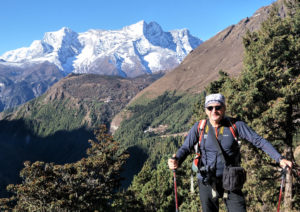
Written by: Enric Alcayde Carbonell
Valencia Spain
Further Information about Mani Rimdu Festival
Ambar Tamang
P.O. Box No: 21101, Kapan-12, Kathmandu, Nepal.
Telephone: 977-01-4810388
Mobile: 977-9851123762
WhatsApp/Viber: 977-9841454462
ambartg@yahoo.com
blossomexpeditions@gmail.com
www.blossomexpeditions.com
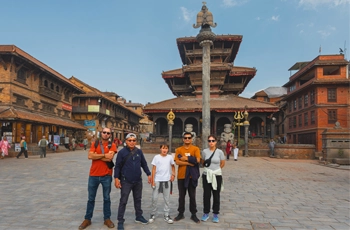
Introduction to the Nagarkot Day Tour Most of the Nagarkot 1-day tours we organize are truly unforgettable. Located at an altitude of 1,930 meters above sea level, Nagarkot is a popular tourist destination near Kathmandu city. From this hilltop, you can enjoy breathtaking sunrises and spectacular views of the majestic Himalayas, including Mount Everest. The surroundin...
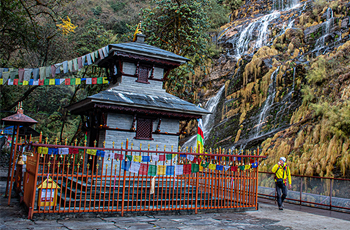
An Unforgettable Journey Through Nepal’s Majestic Himalayas Experience the best of Nepal with a unique trek combining the famous Annapurna Base Camp and the peaceful Khopra Danda, popularly known Khayar Lake Trek. Discover stunning mountains, local culture, and hidden trails. In late November 2024, we went on an amazing adventure in the heart of Nepal's Himalayas. ...
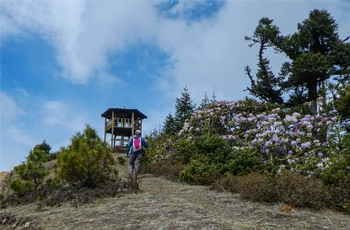
A Journey into Nepal’s Hidden Paradise Our trip to Jumla and Rara Lake in 2024 was an incredible adventure into a really beautiful and remote part of Nepal. Rara Lake, the biggest freshwater lake, is located in the far northwest of Nepal, surrounded by green forests, mountains, and amazing scen...
Comments